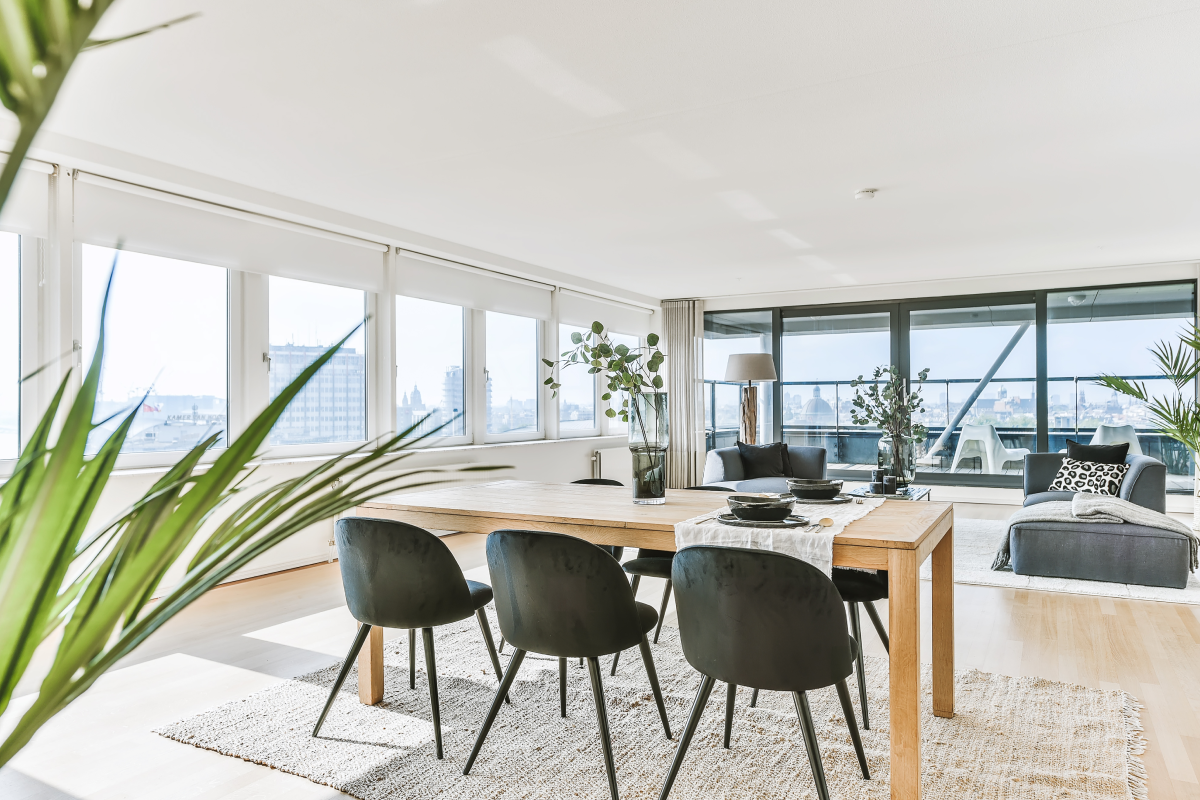
Avoid These Dining Room Furniture Mistakes
26 June 2023
When utilizing space in a cramped home, decluttering is an obvious solution. However, downsizing furniture should also be considered, particularly in the dining room. Bulky dining tables and cabinets can significantly impact the space’s functionality and aesthetic appeal. Avoiding oversized furniture is crucial to maintain a balanced, uncluttered, and adaptable dining area.
Dining rooms are often designed with elegance, sophistication, or warmth. However, when introduced oversized furniture, it can disrupt the desired ambiance and create a sense of clutter and imbalance. Moreover, it limits the ability to move around comfortably in the space. Since dining rooms often serve multiple purposes, choosing furniture that allows flexibility and adaptability for different needs is crucial.
Letting go of cherished cabinets and tables can be emotionally challenging, even when their negative impact on the room is apparent. Sentimental value often leads us to hold onto items that no longer serve their purpose or fit into our homes. To achieve a successful renovation, it is essential to be willing to part with such things to make room for more suitable alternatives.
While sentimentality has its place, it is crucial to prioritize practicality and usefulness. Items like chinaware, bedding, or artwork can often be integrated into a new space. However, bulky furniture rarely provides functionality in a cramped dining room and is easily replaceable.
To address the issue of oversized furniture in the dining room, it is vital to assess the available space and seek furniture pieces that are better suited to the room’s scale. Opting for tables and chairs with rounded edges can create a softer visual appeal while taking up less space. Slim storage cabinets are excellent modern furniture options that maximize space utilization and add elegance to the dining area.
Furthermore, it is essential to consider accessories and fixtures. Chandeliers or art pieces can overwhelm the space if they are too large or detailed for the dining room. An appropriate selection of suitably sized items is necessary to maintain a harmonious aesthetic.
If sentimental attachment to bulky furniture persists, exploring options to modify or repurpose the piece can be worthwhile. Consulting with professionals who can resize or transform the item into something more suitable for the new design can be a practical solution. By doing so, one can preserve the sentimental value while still ensuring the functionality and visual harmony of the dining room.
Avoiding oversized furniture is paramount when designing a dining room with limited space. Letting go of sentimental items may be challenging, but creating a well-balanced, functional, and aesthetically pleasing space is necessary. Choosing furniture pieces proportionate to the room’s scale, considering slim storage options, and being mindful of accessory sizes are critical factors in achieving an optimized dining area. By balancing sentimentality and practicality, one can transform their dining room into a space that reflects personal attachment and a thoughtful design approach.
advertisement

Thank you for signing up!
"*" indicates required fields
advertisement

Avoid These Dining Room Furniture Mistakes
26 June 2023
When utilizing space in a cramped home, decluttering is an obvious solution. However, downsizing furniture should also be considered, particularly in the dining room. Bulky dining tables and cabinets can significantly impact the space’s functionality and aesthetic appeal. Avoiding oversized furniture is crucial to maintain a balanced, uncluttered, and adaptable dining area.
Dining rooms are often designed with elegance, sophistication, or warmth. However, when introduced oversized furniture, it can disrupt the desired ambiance and create a sense of clutter and imbalance. Moreover, it limits the ability to move around comfortably in the space. Since dining rooms often serve multiple purposes, choosing furniture that allows flexibility and adaptability for different needs is crucial.
Letting go of cherished cabinets and tables can be emotionally challenging, even when their negative impact on the room is apparent. Sentimental value often leads us to hold onto items that no longer serve their purpose or fit into our homes. To achieve a successful renovation, it is essential to be willing to part with such things to make room for more suitable alternatives.
While sentimentality has its place, it is crucial to prioritize practicality and usefulness. Items like chinaware, bedding, or artwork can often be integrated into a new space. However, bulky furniture rarely provides functionality in a cramped dining room and is easily replaceable.
To address the issue of oversized furniture in the dining room, it is vital to assess the available space and seek furniture pieces that are better suited to the room’s scale. Opting for tables and chairs with rounded edges can create a softer visual appeal while taking up less space. Slim storage cabinets are excellent modern furniture options that maximize space utilization and add elegance to the dining area.
Furthermore, it is essential to consider accessories and fixtures. Chandeliers or art pieces can overwhelm the space if they are too large or detailed for the dining room. An appropriate selection of suitably sized items is necessary to maintain a harmonious aesthetic.
If sentimental attachment to bulky furniture persists, exploring options to modify or repurpose the piece can be worthwhile. Consulting with professionals who can resize or transform the item into something more suitable for the new design can be a practical solution. By doing so, one can preserve the sentimental value while still ensuring the functionality and visual harmony of the dining room.
Avoiding oversized furniture is paramount when designing a dining room with limited space. Letting go of sentimental items may be challenging, but creating a well-balanced, functional, and aesthetically pleasing space is necessary. Choosing furniture pieces proportionate to the room’s scale, considering slim storage options, and being mindful of accessory sizes are critical factors in achieving an optimized dining area. By balancing sentimentality and practicality, one can transform their dining room into a space that reflects personal attachment and a thoughtful design approach.
Thank you for signing up!
"*" indicates required fields
advertisement
advertisement